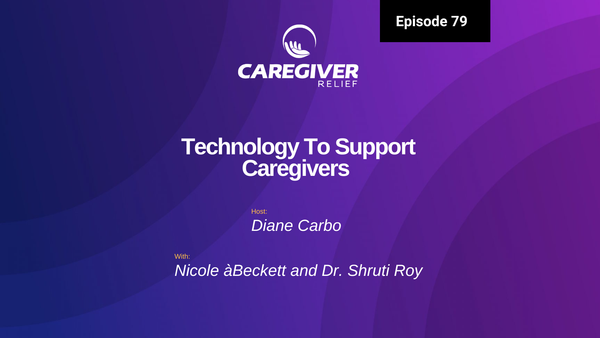Do I Need Long Term Care Insurance?

Long-term care insurance is an important consideration for people who are looking to plan ahead and prepare for their future. Long-term care insurance provides financial coverage for health and personal care services that are sometimes necessary as we age. It is often used to pay for a variety of services, including assistance with everyday tasks like bathing and dressing, and help with medical tasks and therapies.
Most people assume long-term care insurance is only for seniors, but it is becoming increasingly important for people of all ages who are planning ahead for their retirement years. As healthcare costs continue to rise, having a comprehensive plan that includes long-term care insurance could save you a great deal in the long run.
In this guide, we will discuss why you might need long-term care insurance, what it covers, the costs associated with it, and various options for those without insurance. We'll also cover important considerations to keep in mind when choosing a policy and how to find financial assistance.
Eligibility and Coverage for Long-Term Care Insurance
Long-term care insurance is a type of insurance that helps cover the costs of long-term medical care. This type of insurance can be especially useful for individuals who are elderly, disabled, or living with a chronic condition. In order to be eligible for long-term care insurance, you must be age 65 or older, or meet other specific eligibility criteria.
There are several types of long-term care coverage available, including traditional and hybrid policies. Traditional policies have a single benefit option that allows you to receive a fixed amount of money per month. Hybrid policies offer more options and flexibility, allowing you to receive both a lump-sum payment or monthly payments.
The types of care covered by long-term care insurance vary depending on the policy. Generally, they cover custodial care, such as help with bathing, dressing, eating, and other daily activities; medical care, such as home health care visits and nursing care; and in-home care, such as respite care or homemaker services.
Costs and Benefits of Long-Term Care Insurance
It is important to consider both the costs and benefits of long-term care insurance before making a decision. The cost of a long-term care policy varies depending on numerous factors, including the type of coverage purchased, the age of the policyholder, and the amount of coverage desired. Generally, the younger the policyholder is, the more affordable the premiums will be. In addition to the monthly premiums, there may also be additional costs associated with a policy, such as a one-time enrollment fee, annual service fees, or fees for additional riders or coverage.
The benefit of having a long-term care policy is that it can help protect you financially if you need long-term care services. These services can be very expensive, so having a policy in place can help you cover the costs. Additionally, some policies provide coverage for home care, assisted living, and nursing homes, so you can choose the right type of care for your needs. Finally, many policies also provide a death benefit to the beneficiary should the policyholder pass away during the term of the policy.
All of these factors should be taken into consideration when deciding whether or not to purchase a long-term care policy. It is important to consider not only the costs associated with the policy, but also the potential benefits and how they could help you in the future.
Options for those Without Insurance
For individuals who do not have insurance, there are still a variety of options available to help with long-term care needs. These options can vary depending on each individual's circumstances, such as age, health, and financial resources.
- Government Programs: While the specifics vary from state to state, there are several government-funded programs that offer financial assistance with long-term care needs. Examples include Medicaid, which is usually only available to those with low incomes, and Veterans Administration Aid and Attendance, which assists veterans and their spouses with long-term care expenses.
- Long-Term Care Insurance Partnerships: These are state-run programs in which participating plans offer discounted premiums in exchange for enhanced asset protection if the policyholder ever requires long-term care. The discounted premiums offered depend on the state's regulations.
- Private Insurance Plans: Private long-term care insurance plans are available from most major insurers. These plans are typically more expensive than government options, but they can provide more coverage. It is important to compare different policies and their benefits, so you can make the best choice for your needs.
- Home and Community-Based Services: If it is possible, some individuals may choose to receive in-home care, such as help with daily activities like preparing meals and bathing. Home care services can be provided through non-profit organizations or private companies. Additionally, many communities have residential and day care programs specifically designed for seniors.
- Savings Accounts: Those who have adequate savings may choose to use their funds to cover long-term care costs. For some individuals, this can be a better option than purchasing an insurance policy, especially if the need for care is uncertain.
It is important to weigh all of the available options carefully before making a decision. Every situation is unique and requires careful consideration of all aspects of the care plan.
Considerations for Long-Term Care Insurance
When it comes to deciding whether to get long-term care insurance, there are several important considerations. It's important to assess your personal need for this type of insurance and weigh the cost benefits.
One of the first things to consider is your age and health. Typically, the younger you are when you purchase long-term care insurance, the better the rates will be. If you’re older or in poor health, this coverage may not be available or may be more expensive.
It’s also important to consider how a policy fits into your financial picture. Long-term care insurance typically covers costs that are not covered by other policies, such as Medicare and regular health insurance. Therefore, you should look at all of your existing resources and consider if you can afford long-term care insurance premiums in addition to any other insurance payments.
You should also think about how much coverage you need. Different policies offer various options, such as what kind of care is covered, the length of time the care is covered for, and how much money the policy offers.
For instance, some policies provide coverage for nursing home care, while others may also cover home care services and even adult daycare services. Depending on the kind of care you need, it’s important to choose a policy that provides the type and amount of coverage that best meets your needs.
Finally, it’s important to do research on different insurers to make sure you’re getting the best price and value. Be sure to compare policies and shop around to find the best deal. It’s also beneficial to read customer reviews to see what experiences other people have had with the insurer.
In the end, taking the time to carefully consider long-term care insurance is essential to finding the policy that works best for you.
When it comes to choosing a long-term care insurance policy, it is important to take the time to research and consider all your options. Here are some tips for choosing the right policy for you.
Research Coverage Options
The first step to choosing a long-term care insurance policy is to evaluate the coverage options. Different policies will offer different levels of coverage, so it is important to understand what each policy covers before making a decision. Consider the types of services you might need in the future and make sure the policy provides adequate coverage for those services.
Compare Prices and Premiums
Once you have narrowed down the coverage options, it is time to compare the cost of the different policies. This means looking at both the premiums (monthly payments) and any additional costs associated with the policy. In some cases, you may be able to negotiate lower premiums or find ways to save money on the policy by taking advantage of discounts or additional programs.
Read the Fine Print
Before you sign a policy, it is important to read the fine print and ask questions if something is unclear. Pay close attention to the eligibility requirements, exclusions, and restrictions. Make sure you know exactly what is and isn't covered by the policy. It is also important to understand how to file a claim and how long the policy will remain in effect.
Choose a Reputable Insurer
When selecting a policy, it is also important to choose a reputable insurer. Do your research and make sure the insurer has a good track record when it comes to customer service, complaint handling, and paying out claims. Ask friends and family for recommendations if possible.
By researching coverage, comparing prices and premiums, reading the fine print, and choosing a reputable insurer, you can make sure you select the best policy for your needs. Taking the time to do the proper research will ensure that you and your loved ones are protected in the event of an unexpected illness or injury.
Many people think that long-term care insurance is too expensive and not worth the cost. However, there are programs and organizations that can offer financial assistance to help make it more affordable.
One way to access financial assistance is through public programs like Medicaid and Medicare. Depending on the state you live in, Medicaid may pay for part or all of your long-term care needs. While Medicare typically doesn't cover long-term care services, they may provide some coverage for certain limited services.
Another way to get financial assistance is through private health insurance. Depending on your plan, your insurer may partially cover the cost of long-term care services. Additionally, some employers offer long-term care insurance as part of their benefits packages. It’s important to check with your employer or health insurance provider to find out about any long-term care coverage that may be offered.
You can also look into other sources of financial assistance. There may be non-profit organizations in your area that can provide assistance with long-term care. Additionally, there are state and federal programs that offer grants and loans to help pay for long-term care costs. These programs may be based on your income level, so it’s important to research the eligibility requirements.
Finally, there are programs available that allow you to use the equity in your home to pay for long-term care services. These programs typically provide funds to cover costs related to nursing homes, home care services, and assisted living facilities. It’s important to understand the terms and conditions of these programs before signing up.
Overall, there are a variety of ways to access financial assistance for long-term care services. If you are considering long-term care insurance, it’s a good idea to research the options available to you and make an informed decision.
Long-term care insurance can provide individuals with financial protection in case they need help with everyday activities like dressing, bathing, and eating, or require special equipment to keep them safe. It also helps to make sure that the person’s finances don’t suffer when they are unable to work due to an illness or injury. When deciding whether to purchase long-term care insurance, it is important to carefully consider all the options.
Eligibility for long-term care insurance varies by insurer, but there are typically certain criteria that must be met. Generally speaking, these include age, health status, and income. Coverage also varies depending on the policy, but most long-term care insurance policies cover things like personal care, medical equipment, and home modifications.
The cost of long-term care insurance can vary significantly, but it’s important to look at the overall benefits and cost savings associated with having the policy. Having a policy can save money in the long run by not having to pay out-of-pocket for long-term care expenses. Also, many policies have inflation protection, meaning the cost of care increases with inflation, so the policy keeps up with the rising cost of long-term care.
For those who may not be able to purchase long-term care insurance, there are some options available, such as Medicaid and disability benefits. It is important to research all of the options and understand the requirements for each program. Additionally, some employers may offer long-term care insurance plans, so it’s worth asking.
When considering long-term care insurance, there are a few considerations to make, such as assessing your own personal need and weighing the cost benefits. Additionally, it’s important to research different policies and insurers to find the best fit for you.
When choosing a policy, use the following tips to help you make an informed decision:
• Make sure the policy covers the services you need.
• Make sure the premiums will fit into your budget.
• Ask about discounts and incentives.
• Look for an insurer that has a good reputation and history.
• Read the policy's fine print and understand the limitations and exclusions.
Finally, there are various organizations that offer financial assistance for long-term care insurance. It’s important to research any programs that may be applicable in your area and understand their eligibility requirements.
In conclusion, long-term care insurance can be an important way to financially protect yourself or your loved ones in the event of illness or disability. It is important to research all the options, weigh the cost benefits, and choose the best plan and insurer for you. The process may be complex, but with the right knowledge and foresight, you can ensure you and your family are protected.




